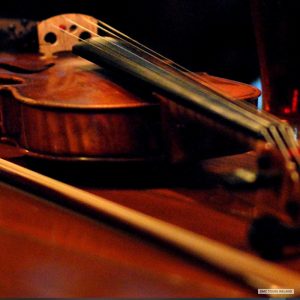
The Curse of Cromwell and music in Protestant Ascendancy Ireland.
The Elizabethan conquest and subsequent plantations were ultimately resisted in Ireland and in 1641 there was a rebellion. The 1641 rebellion was primarily concerned with regaining control of Ireland by the ruling classes of Irish Catholic descent. It was a political attempt at a coup d’etat which then descended into widespread violence and ethnic conflict. It then evolved into the Irish Confederate Wars and ended with the Cromwellian conquest of Ireland.
This latter event was a complete cultural, social and political reboot of Irish society. The consequences of which were total and complete. If the Tudor conquest heralded the beginning of the end of the Gaelic order in Ireland, the Cromwellian conquest was the final chapter.
 Everything changed and much was lost and lamented. It was inevitable and it was tragic in many instances. The factional infighting of Gaelic society contributed to its elimination by larger outside forces.
Everything changed and much was lost and lamented. It was inevitable and it was tragic in many instances. The factional infighting of Gaelic society contributed to its elimination by larger outside forces.
It was the bloodiest and deadliest war in Irish history. The musical culture was irrevocably altered. Mass deportation of Irish began through indentured servitude/enforced slavery; this is a hugely contested area and the wording of this still continues to create division.
Regardless of these finer points a culture came to an end and a new regime was enforced. Whatever ‘Gaelic’ culture that was to emerge in the future would be permanently changed.
Those that could fled independently. Some were sent ‘to hell or to Connaught’ (the death penalty of the bleak environs of Connaught which may not have been much better. A study of the lineages of the noble Irish clan leaders reflects this displacement with Irish aristocrat lines emerging in France, Spain and Portugal.
Songs then emerge eulogising these dispossessed Irish. ‘Sean Ó Dubhir a’ Ghleanna’ is one such song that is still played and recorded by musicians today. This is a haunting piece that if meditated upon will bring you right back into the moments when it was written. There was an ending taking place.
The end of the 1600’s saw the completion of the destruction with the Williamite War. Another layer of lament was laid down in the aftermath. ‘Marbhna Luimní’ The Lament of Limerick and ‘Clare’s Dragoons’ record the loss of Limerick and the subsequent exploits of the defeated and exiled Irish in European armies.
Not all fled, and those that stayed continued to fight in the hills as outlaw rapparees. ‘Éamonn na Chnoic’ immortalised the legendary Éamonn Ryan of Tipperary. This song portrays him as a Robin Hood figure.
Fenian lays, ballads based on the mythological creation myths from the prehistoric period became popular as the ancient world drifted into memory only. Lays, or laoithe, continued to be sung in Ireland right up until the 1940’s when the last ones were recorded in Glencolmcille in Donegal.
Caoineadh, or laments, then become popular and particularly religious laments with reference to Marian themes. Keening is an English word derived from this tradition and ‘keeners’ were present at funerals. There were four different kinds of ‘keeners.
Bean chaointe, or keening women, who performed in the presence of a corpse. Marbhna, or bardic elegy, were sung for dead chieftains. Death laments became popular after the destruction of the Bardic Schools as an attempt to prolong the traditions of the bardic poets. The last type were death songs which are still featuring in the repertoire of sean nós singers today.
Love songs, often emotionally striking, dominated the folk repertoire, or amhrán, after the late seventeenth century. Cearbhall Ó Dálaigh was one such who left behind a deep imprint of the culture of romantic poets. ‘Éibhlín, A Rún’ is a song still sung today which is representative of the mystique.
Turlough O’Carolan was one of the most famous, and last, of the Irish harpists. As he was blinded by smallpox he was taught the harp as a way of earning and income. This was quite a common practice in mediaeval Ireland. As the system of patronage disintegrated due to the political and religious upheaval O’Carolan represented that last of the tradition. He adapted his repertoire and style to suit the incoming Ascendancy tastes.
The old world was fallen away and a new one would emerge.